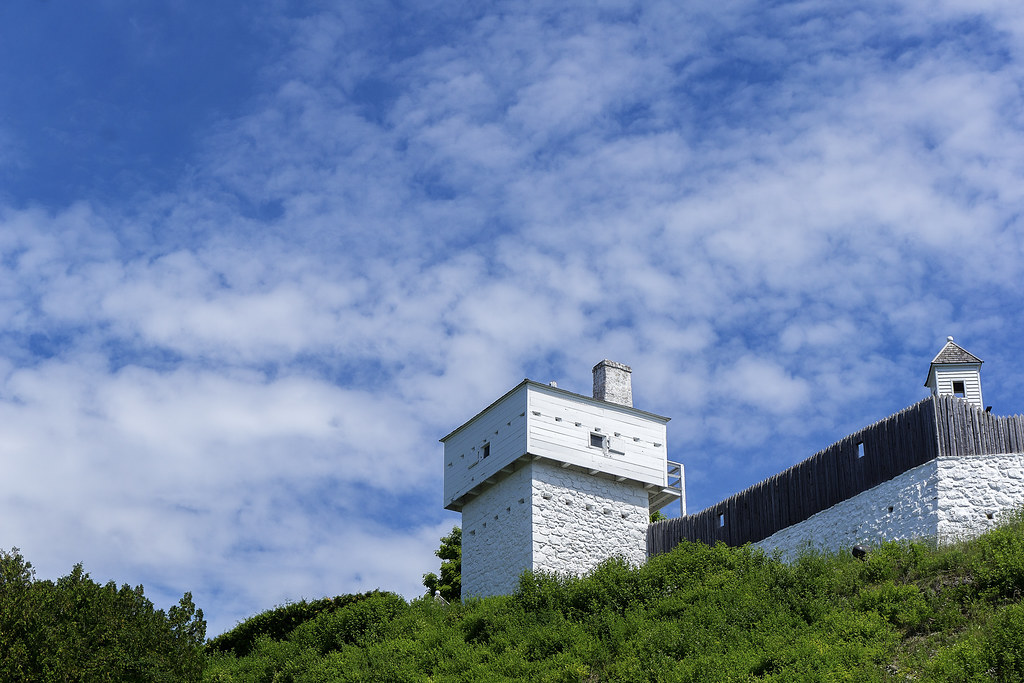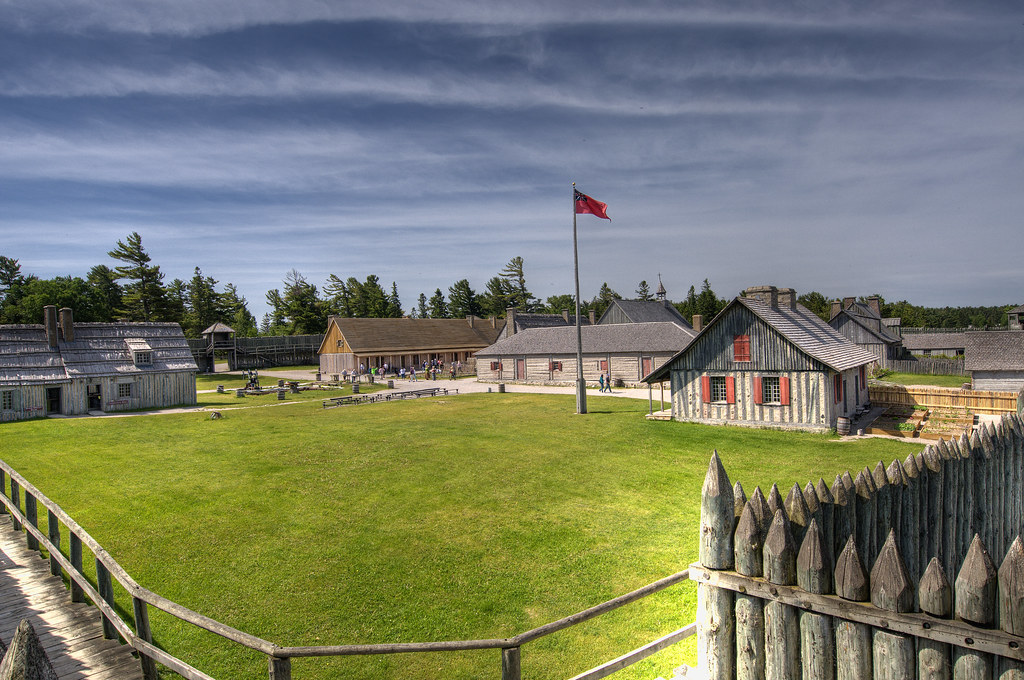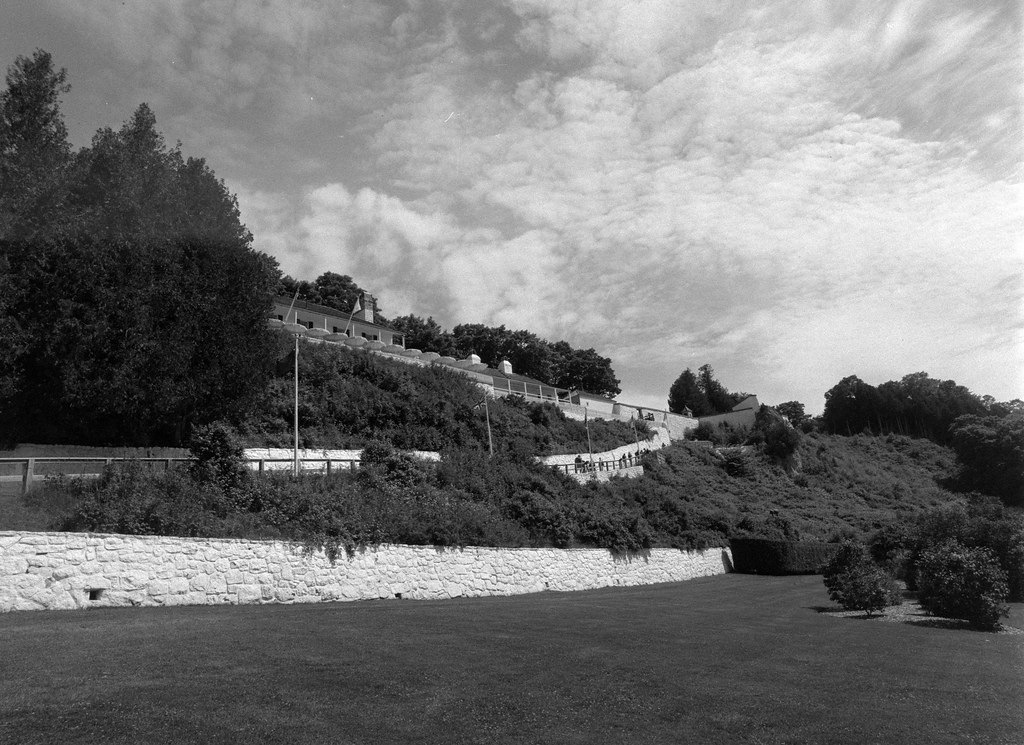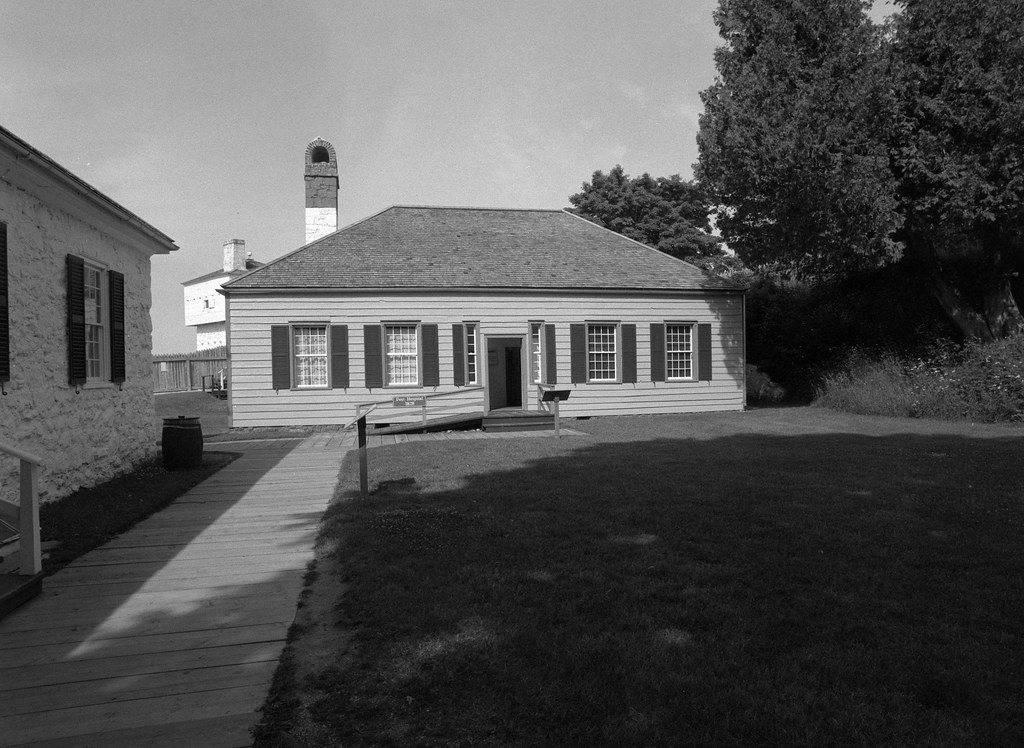One of the first sights you see if you visit the picturesque Mackinac Island is white stone walls sitting high above the ferry docks. Fort Mackinac has a long history that covers much of the early days of French, British, and American history in the region. The island, set in the major trade route of the Straights of Mackinac that divide “The Mitt” from the “Upper Penisula” of Michigan traces it’s importance back well before the colonial history of the early 18th-Century. And while the military history of the island ended five years before the turn of the 20th-Century, today the fort remains one of my favourites both to talk about and to visit.

Sony a6000 – Sony E PZ 16-50mm 1:3.5-5.6 OSS
Fort Mackinac would not be the first fort to be constructed in the region, French Fur Traders realising the importance of the Straights of Mackinac had established Fort Michilimackinac in 1715 as part of their extensive trade routes, and Jesuit priests were also active among the indigenous tribes that occupied both the mainland and the small islands that dotted the straights. When the French-Indian War tore the region apart, the British would eventually lay siege to and capture the small fur trading post in 1759. With the end of the French-Indian (or Seven Years) war, the Briths not gained all of New France, but access to the lucrative fur trade routes and maintained a Garrison at the mainland fort.

Nikon D300 – AF-S Nikkor 14-24mm 1:2.8G
The British garrison had nothing much to fear when violence erupted in the thirteen colonies opening the American Revolutionary war in 1775, the distant fur trade fort was far from the hostilities on the eastern seaboard. But as the revolutionary war spread it became clear that if the colonial forces were to attempt to capture the old French fort, they could do so with ease. And in 1780 the British garrison dismantled the French fort and transported the material across to Mackinac Island. The new post, Fort Mackinac, would prove to be a far more difficult target for the colonial forces. Constructed at the top of 150-foot limestone cliffs and made from local limestone the fort would remain untouched by the time the conflict ended in 1783. And because many of the northern forts had been maintained and held by the British through the war, they decided they would maintain their garrisons. This also included Fort Niagara and Fort Ontario in New York. Of course, this all changed when the Jay treaty would be signed in 1796, and the British were forced to cede control of the forts to the Americans.

Mamiya m645 – Mamyia-Sekor C 35mm 1:3.5 N – Kodak Plus-X 125 – Blazinal (1+25) 6:00 @ 20C
The Americans only maintained a small garrison at the fort, troops and supplies were hard to get to the area and being such an isolated post communication with the next nearest American post, Fort Detroit was spotty, and there were long periods of silence. It was this silence that their British counterparts were hoping for. By the year 1812, the Mackinac had a small garrison of only sixty men and a handful of officers. The surrounding island was occupied by a small population of civilians. On July 17th, 1812 the war came to the island when Captain Roberts from Fort St. Joseph landed a large force on the island intent of taking the fort back for the British. Lieutenant Porter, commander of the garrison had not yet been informed that war existed between the Empire and the United States surrendered without a fight. The garrison was quickly paroled and allowed to leave, along with any of the population who did not swear an oath of allegiance to the British crown or did not wish to. The fort later was able to capture two American ships, they were unaware of the fort’s capture, and the British raising the stars and stripes over the Fort lured the two ships in where they were promptly captured joining the Lake Erie squadron as the HMS Chippeway and HMS Little Belt. When the war turned to the American’s favour in 1813, Captain Robert McDoull along with a detachment of the Royal Newfoundland Regiment of foot established a new northern route to supply the northern outpost. Upon arrival at the fort, he quickly ordered the construction of a second fortification at the island’s highest point. The new Fort George was a heavily armed palisade wall fort and blockhouse to better defend the island against a possible attempt at taking the fort back. The new fortifications proved their value in July of 1814 when the island was assaulted by an American force but was repulsed. The island remained in British hands until 1815 when it was again returned to the Americans at the end of the war.

Mamiya m645 – Mamyia-Sekor C 35mm 1:3.5 N – Kodak Plus-X 125 – Blazinal (1+25) 6:00 @ 20C
The strategic value of the fort declined after the War of 1812 as in the north there weren’t as many clashes as with the more southern borders with the Canadas. As relations improved the fort was used as a holding garrison, the result was that at many times the fort was nearly unmanned, as troops flowed in and out. However, the post maintained a small permanent staff of an officer or NCO, a doctor and other administrative staff. The island continued to be a hub for the fur trade in the area. It was in 1822 that the post’s doctor, Doctor William Beaumont, treated a fur trader with a serious stomach injury. The injury was repaired and the fur trader lived. However, he was left with a hole, allowing Doctor Beaumont to study how the human digestive system work, he would later publish his findings in his well-known book, Experiments and Observations on the Gastric Juice, and the Physiology of Digestion.

Mamiya m645 – Mamyia-Sekor C 35mm 1:3.5 N – Kodak Plus-X 125 – Blazinal (1+25) 6:00 @ 20C
The fort also served as a marshalling area for expeditions into the northern parts of the United States and as a prison for three Confederate allies during the Civil War. By 1875 Fort Mackinac was no longer needed as a military post, Congress declared most of the island including the two forts a National Park, second in the United States (the first was Yellowstone). The soldiers stationed there became park rangers along with their regular military duties. The northern station soon became highly desired, the fort expanded to include a bath, flush toilets, and a canteen with good food and alcohol along with other items the soldiers could purchase. All the comforts of home even with the strict discipline of the military life. The Boy Scouts also volunteered on the island (a tradition that continues today along with Girl Scouts). The fort was transferred to the State of Michigan in 1895 as its first state park, the American Army abandoning the fort at the same time. Today visitors can take a ferry across from Mackinac City or St. Ignace to visit the historic downtown and the two forts, the main fort restored and staffed as it would have been in the 1880s. The island is also a car-free zone so you have to move around on bicycles, feet, or horse-drawn carriages.

Mamiya m645 – Mamyia-Sekor C 35mm 1:3.5 N – Kodak Plus-X 125 – Blazinal (1+25) 6:00 @ 20C
Written with files from:
Guidebook to the Historic Sites of the War of 1812 Second Edition by Gilbert Collins – 2006 The Dundurn Group Publishers
Web: www.mackinacparks.com/history/index.aspx?l=0,1,4,32,39